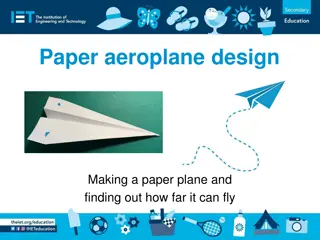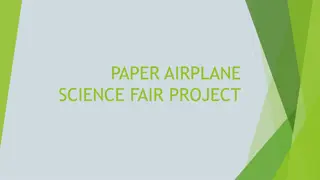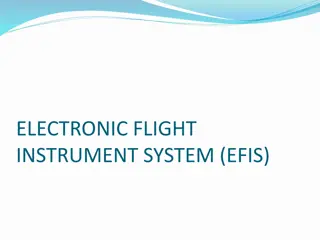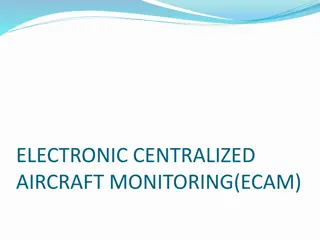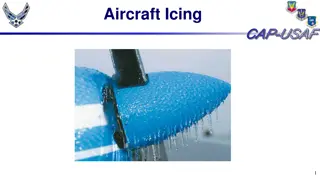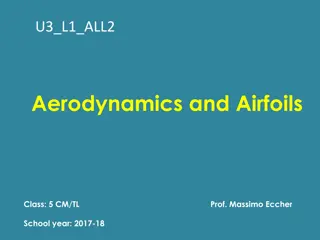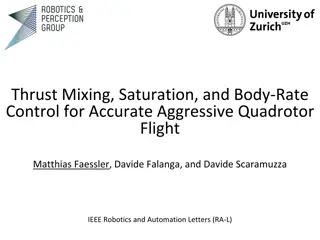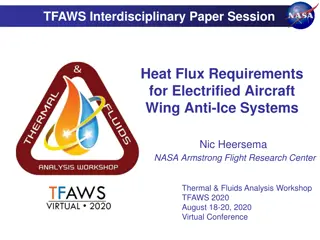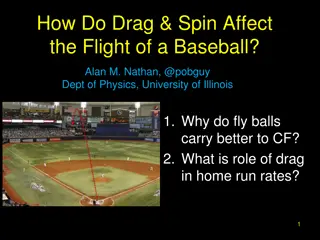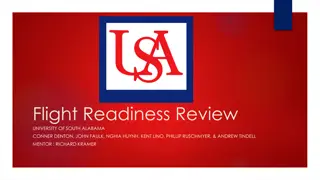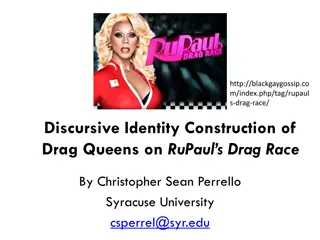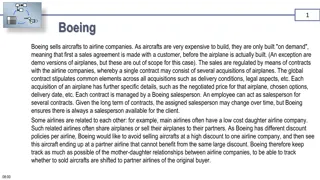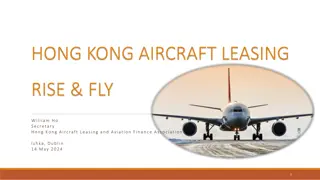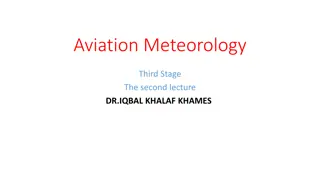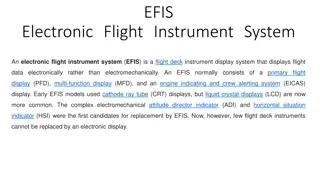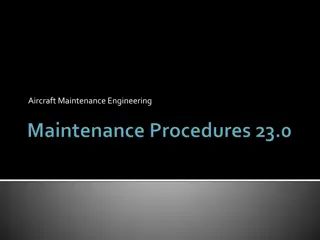Understanding Drag and Thrust in Aircraft Flight
Explore the fundamental concepts of drag and thrust in relation to aircraft flight, including the impact of streamlining on drag, the interplay between drag and thrust during different aircraft maneuvers, and the production of thrust by propellers and jet engines. Uncover how Newton's Third Law influences the generation of thrust and grasp the significance of drag in overcoming airflow resistance. Discover how drag varies with airspeed and the necessity of thrust to combat drag forces. Witness how altering shapes can affect drag coefficients for efficient flight performance.
Download Presentation

Please find below an Image/Link to download the presentation.
The content on the website is provided AS IS for your information and personal use only. It may not be sold, licensed, or shared on other websites without obtaining consent from the author. Download presentation by click this link. If you encounter any issues during the download, it is possible that the publisher has removed the file from their server.
E N D
Presentation Transcript
Uncontrolled copy not subject to amendment Principles of Flight Learning Outcome 1 Understand the principles of flight Part 2: Describe how thrust, drag, weight and lift affect aircraft in flight Revision 2.00
Drag and Thrust Objectives: 1. Explain drag and thrust 2. Describe the effect that streamlining has on drag 3. Describe the relationship between drag and thrust when an aircraft is: a. At constant speed b. Accelerating c. Decelerating
Drag and Thrust Lift Thrust Drag Weight
Thrust How do we produce thrust? 1. Propellers 2. Jet engines
Remember Newtons Third Law? The engine achieves thrust by pushing the air backwards from either through a propeller or from the rear of a jet engine The amount of thrust depends on engine size and altitude
Drag What is drag? Remember riding a bicycle into a wind or riding faster? PHEW!
The amount of drag varies with the square of the airspeed So: Double the airspeed, then drag is four times as great! Triple the airspeed, then drag is nine times as great! Drag Airspeed
Drag is the force which hinders your progress The faster you go the more drag you feel We need thrust to overcome the drag Consider: Airflow The plate causes maximum drag 20 people are needed on the team
What happens when we pull a ball of the same diameter as the plate? Airflow Drag is now reduced by 50% Now only 10 people are needed on the team
What happens we streamline a shape of the same diameter? Airflow Drag is reduced to 5% Now only one person needed
Form Drag Very turbulent wake Reduction in Form Drag 50% 85% 90 - 95%
This type of drag is called Form Drag It is determined by the shape of the object So do we need: OR This shape? This shape? Reducing drag reduces the amount of thrust required
Drag Drag can be represented by the following graph: TOTAL DRAG DRAG ZERO LIFT DRAG LIFT DEPENDENT DRAG IAS VIMD
Thrust and Drag in straight and level flight 1. Aircraft accelerating What is the difference between thrust and drag? Thrust is greater than drag
2. Aircraft decelerating What is the difference between thrust and drag? Drag is greater than thrust
3. Aircraft at constant speed What is the difference between Thrust and Drag? Thrust = Drag
For straight and level flight at constant speed ALL forces are in balance Lift Thrust Drag Weight
1. What is the force called that drives an aircraft forwards? Lift Weight Drag Thrust
2. What is the force called that resists the forward motion of an aircraft? Lift Weight Drag Thrust
3. If you speed is doubled, by how much would the drag be increased? x2 x4 x6 x8
4. If Thrust = Drag and Lift = Weight then the aircraft is: Climbing Flying straight and level and accelerating Flying straight and level and decelerating Flying straight and level at a constant speed



